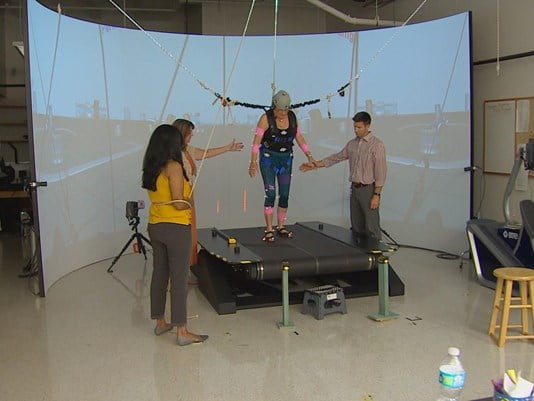

It looks, admittedly, a little peculiar.
“When I sent a pic to my daughter, I said do not put this on Facebook,” jokes 63-year-old Sandie Hampton. “Just wait until the cap goes on, it’s just gorgeous.”
But Hampton is standing, patiently, as researchers affix 54 tiny reflective bulbs all over her body. The reason for this futuristic fitting is worth it. Hampton is dressed as part of a study at the UNT Health Science Center in Fort Worth. The study’s goal is to analyze why Parkinson’s patients tend to fall, and then find out how to prevent those falls.
“The technology is really incredible,” says the former nurse.
What’s happening inside the lab is unlike any other Parkinson’s research happening in our state. If it looks like a scene out of a sci-fi film, there’s good reason.
Researchers say the 3D technology used to analyze the patients’ movements is the very same technology James Cameron used in the movie “Avatar.”
“They’re used to seeing it in the movies, but in the movies, they want to make the avatars move more normally,” says researcher Rita Patterson. “But we want to know how you move. So we’re looking at it from the other side.”
Patterson, along with her co-investigator Evan Papa, say with this information, they hope to make a big difference for the 10 million people with Parkinson’s worldwide.
“The end game is to help people reduce the number of falls they have,” Papa says. “If we can do that, if we can help one person have one less fall, then that’s a huge impact for us.”
Hampton knows how much that would help. “The fall, where I broke both my knee caps, was the one that made it clear it was time to see the neurologist,” she says.
She hopes her contribution in this virtual reality setting changes the actual reality for Parkinson’s patients like herself.
The study is funded by the American Osteopathic Association.
[“Source-wfaa”]

